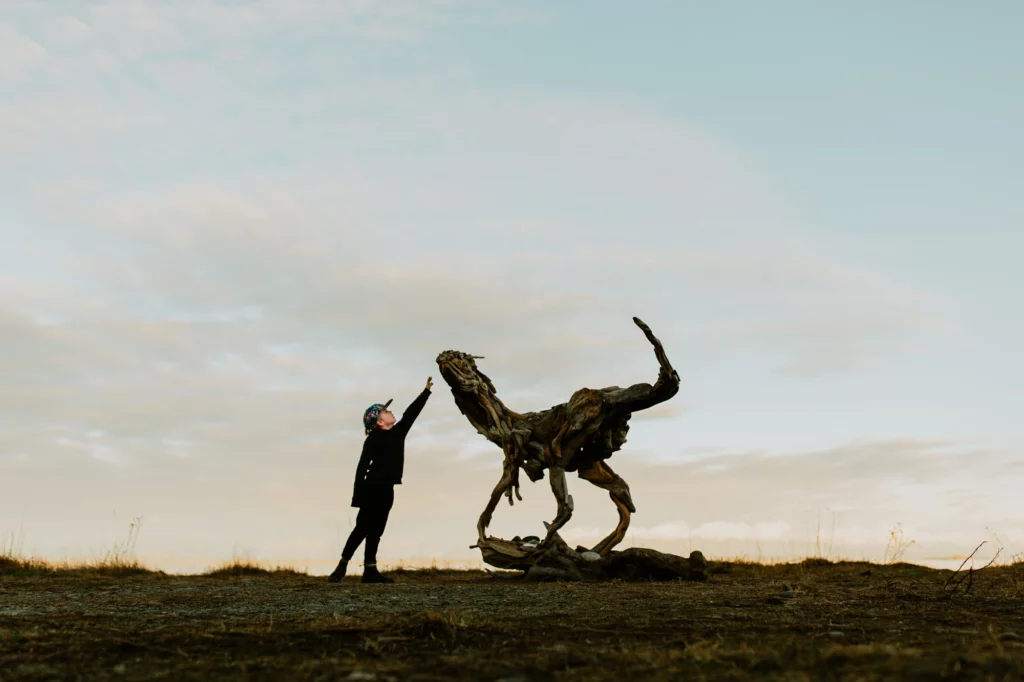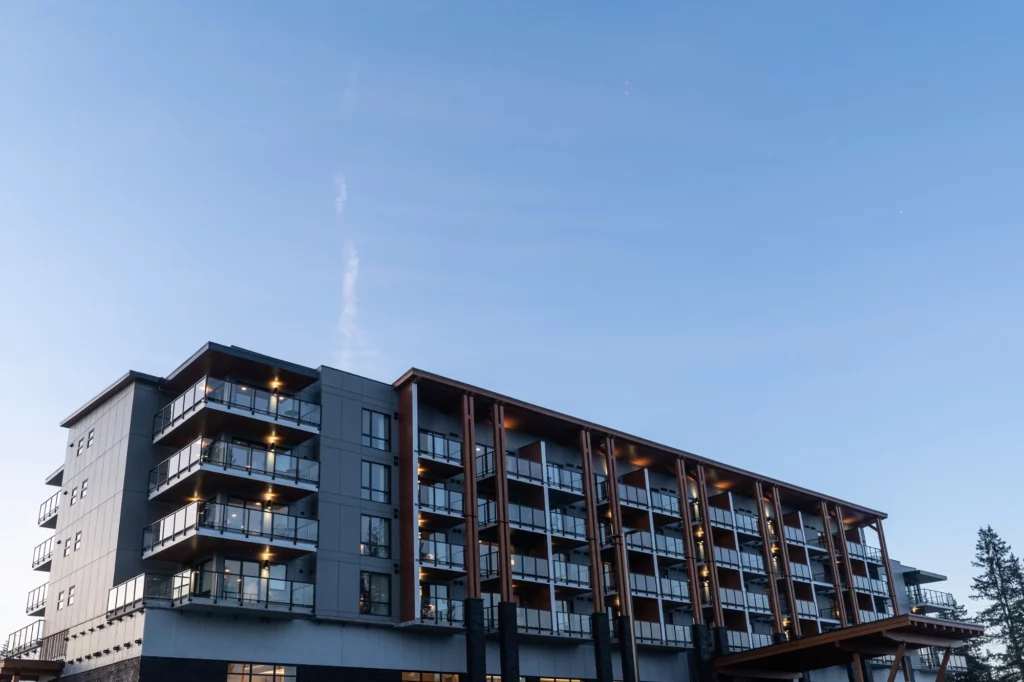The Beaver Lodge Lands are a favourite walking and biking area in Campbell River. These multi-use trails encompass 416 hectares of land and were donated to the Province by the Elk River Timber company in the 1930s. This area is full of the natural beauty of history! Read on for everything you need to know about the Beaver Lodge Lands.

FYI: the first actual planting trials technically happened in Victoria, but they were in a nursery. So Beaver Lodge is the first “large-scale” plantation.

PRE 1931 HISTORY
The area was logged by railway, which was common practice between 1900 and 1950 as resources along the coast were depleted and companies had to venture further inland. After an area was logged in that era, it was reforested through natural regeneration, meaning that seeds were spread by wind or animal droppings. Large “seed trees” were sometimes left behind in the block so that the wind could spread seeds directly from that tree into the nearby soil. This process was not very efficient as it took a long time to establish a forest, and often didn’t have the desired results as less marketable species such as Red Alder would establish themselves in the stand.
Donation in 1931
In 1930 many of the assets owned by the International Timber Company were taken over by Elk River Timber. Approximately 450 hectares of logged land was then donated to the Province in 1931 by the Elk River Timber company with the intention of it being used for research in forestry and is what we now know to be Beaver Lodge Forest Lands. Since then it has been run by the Ministry of Forest, Lands, Natural Resources Operations, and Rural Development (FLNRORD), who keep it open to the public for recreational use.
Restoration and Planting:
Beaver Lodge was the first large-scale plantation in British Columbia. The research done on planting techniques and survival rates of species within Beaver Lodge Lands helped to create planting guidelines followed all over BC today, as some of the planted stands were so successful that they mimic the characteristics of old-growth forests.
Fun fact: some of the trees planted in Beaver Lodge came from that nursery in Victoria

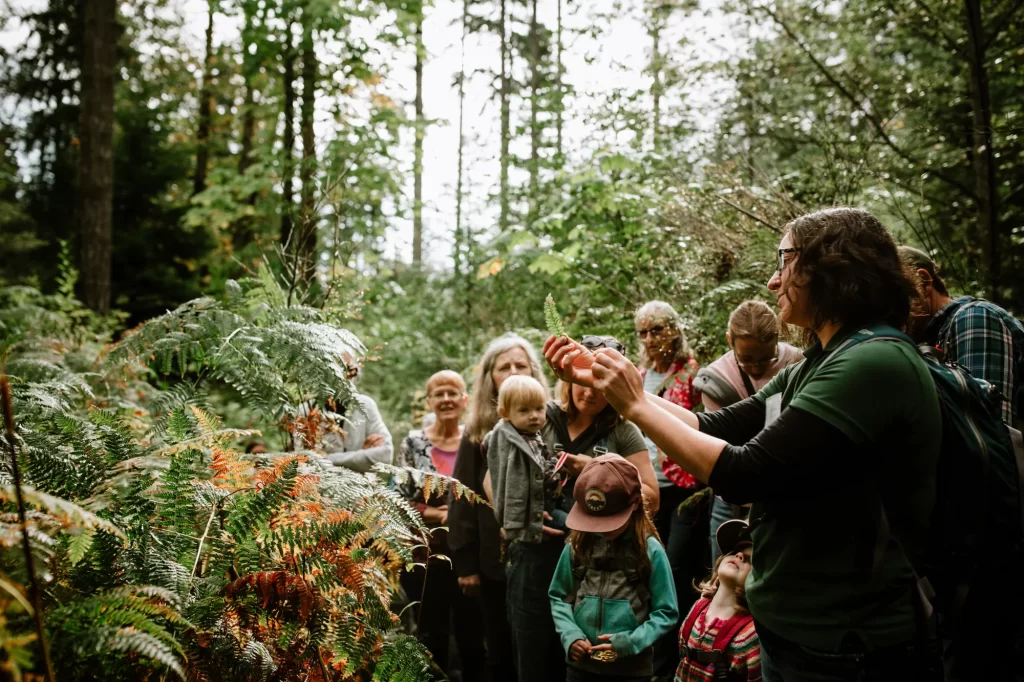
Current Species Diversity
Today it is used to study the wildland urban interface, looking at the relationship between urban development, recreational use, and ecosystem health. The second-growth forest lands mimic old growth by having a multi-level canopy, developed understory vegetation, and self-replacing tree species. In the drier areas, it is common to see Douglas Fir, Grand Fir, Bigleaf Maple, and Red Alder. In the wetter areas you will find Western Hemlock, Western Red Cedar, and Sitka Spruce. The forest ecosystem also provides a home for deer, cougars, black bears, eagles, beavers, owls, and salmon.
Tree ID Guide
Douglas Fir
Identifying Characteristics: Doug Fir is often recognized by its bark, which has thick, rough ridges, and is dark brown in colour. The needles also help with identification, as they are flat, green-yellow in colour, and have two distinct white bands of pores called “stomata” on their underside.
Foresters Trick: If you want to be sure you’ve found a Doug Fir, search on the ground around it for cones. They have 3-forked “bracts” in between the scales that look like the back feet and tail of little mice.
Sitka Spruce
Identifying Characteristics: Sitka Spruce has a thin, red-brown or grey-brown bark that breaks off in small scales. Its cones are about 5-8 cm long, red-brown, and have thin, wavy scales. The needles can be yellow-green or blue-green, with 2 lines of stomata on the upper surface and two thinner lines on the underside. If you pluck one-off and roll it in your fingers you will feel that it has 4 distinct sides rather than 2.
Foresters Trick: The easiest way to identify them is by “shaking hands”. Gently grab onto a branch like you are going to shake hands and notice how it feels. Spruce are known for their hard, sharp needles. You will feel them right away!
Western Red Cedar
Identifying Characteristics: Western Red cedar is famous for its red-brown bark that tears off in long strips. The foliage is scaly, almost looking like a braid up close. If you have trouble telling if you’ve found Western Red cedar or Yellow Cedar (Yellow Cypress), find a low-hanging branch and gently break off the tip of one of the braids. You will either see a 3 pointed shape resembling a W for Western or a 2 pointed Y shape for Yellow.
Foresters Trick: Not having any luck seeing the Y or W? Take a good sniff of the foliage in your hand. That well-known sweet Cedar smell belongs to a Western Red cedar. If you notice a starchy potato-like smell, that’s a Yellow Cedar.
Grand Fir
Identifying Characteristics: Grand Fir has a scaly, grey-brown bark, which is often covered in white mottles. Its needles are flat and have rounded ends with a small notch. The needles often come out horizontally, making the branch appear flat which distinguishes it from other firs you may find.
Foresters Trick: Take a look high up into the canopy and try to spot any cones still on the tree. Grand Fir belongs to the family of “True Firs” who have upright cones. Instead of hanging down from the branch, their cones appear to defy gravity and grow straight up from the branch.
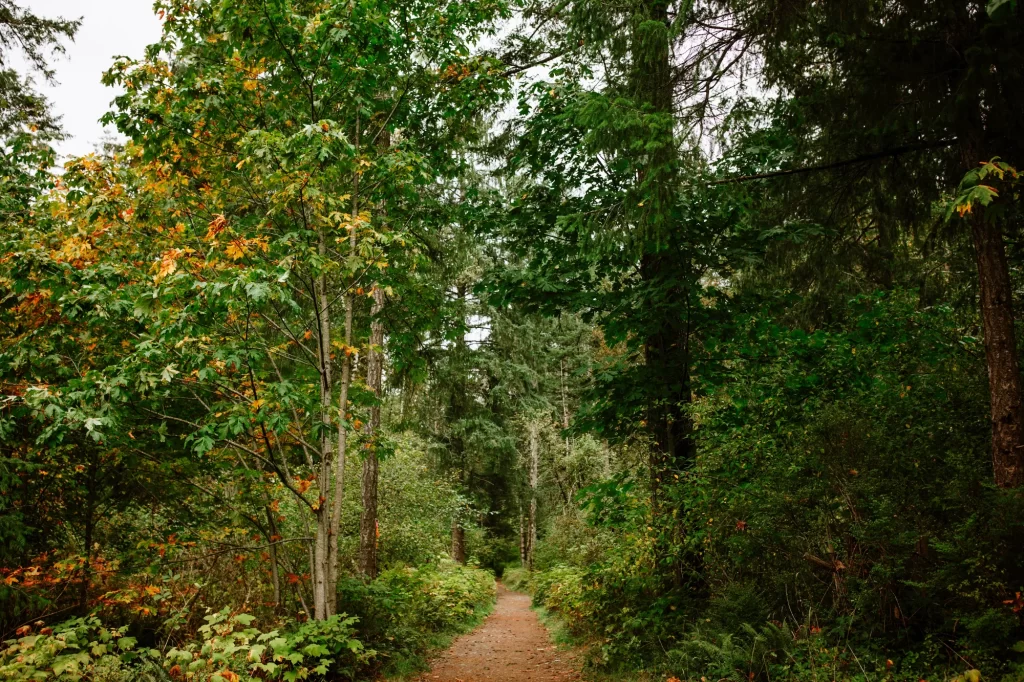
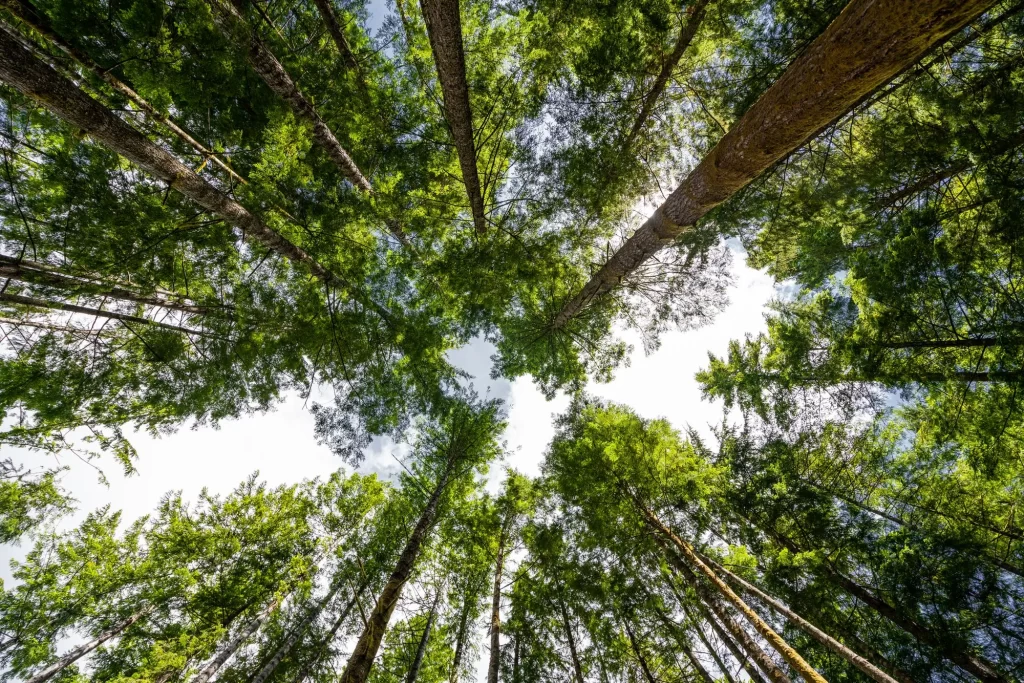
BONUS ID ROUND
Although not officially listed, Western Larch was also planted and can still be found in Beaver Lodge today if you look hard enough.
Western Larch
Identifying Characteristics: Larch needles are soft green when new, and turn golden in fall. The trees are unmistakable as the needles grow in bundles of 15-30 with an exposed branch in between, making them reminiscent of something from a Dr. Seuss story.
Foresters Tip: If you find one during the spring or summer, consider going back to see it in the late fall. The Western Larch is actually a deciduous conifer, meaning they shed their needles in the fall!
Current Use
The Beaver Lodge Lands have a wide variety of trails that are loved by locals and visitors alike. To get started, we suggest the Rail Trail, which is roughly 3km long and takes approximately 40 minutes to walk one way. This trail was developed on an old logging road, which created a path that is fairly wide and level. All trails in the Beaver Lodge Lands are multi-use and suitable for all ages and skills: bikers, walkers and horseback riders are all welcome. Click here for a map.
✔️Bike Friendly ✔️Wheelchair/Stroller Accessible (Rail Trail) ✔️Dogs are allowed on leash



